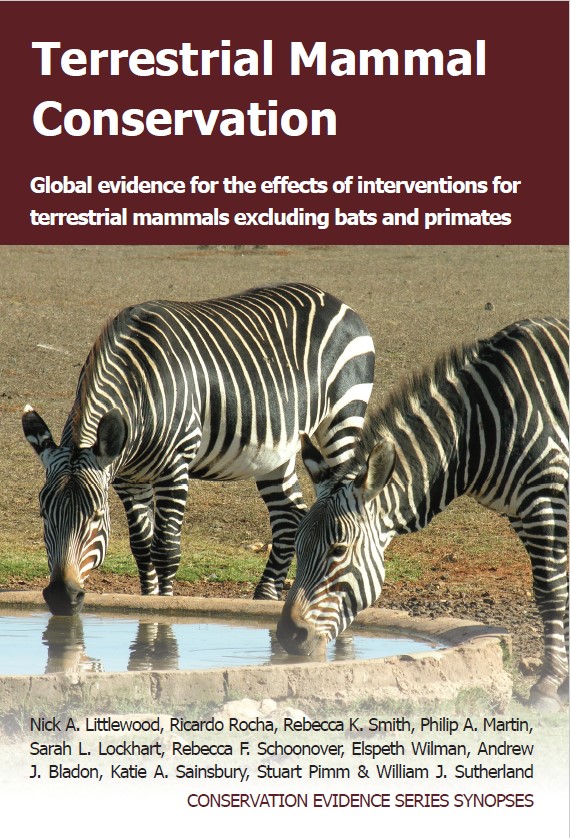Use fire to deter crop damage by mammals to reduce human-wildlife conflict
-
Overall effectiveness category Likely to be beneficial
-
Number of studies: 2
View assessment score
Hide assessment score
How is the evidence assessed?
-
Effectiveness
55% -
Certainty
40% -
Harms
4%
Study locations
Supporting evidence from individual studies
A replicated study in 1995–1996 in crop fields at a site surrounded by savanna in Sebungwe, Zimbabwe (Osborn 2002) found that when scared by a combination of large fires and people with dogs Canis lupus familiaris, whips and drums, African elephants Loxodonta africana were repelled faster from fields than by a combination of people with dogs, slingshots, drums and burning sticks. Elephants were repelled faster when scared with by large fires and people with dogs, whips and drums (4 minutes) than when scared by people with dogs, slingshots, drums and burning sticks (10 minutes). However, when scared by large fires and people with dogs, whips and drums, elephants charged at defenders during 60% of scaring attempts (9 of 15). Elephants raiding crops were scared 15 times by 4–7 people with multiple large fires, several dogs, whips and drums and 11 times by 2–3 people with dogs, slingshots, drums and burning sticks. Behavioural responses were monitored through a monocular. Elephants and farmers were 20–40 m apart. Tests were conducted between 18:30 and 06:30 h. The number of fields was not specified.
Study and other actions testedA study in 2006–2009, in two areas of Assam, India (Davies et al. 2011) found that using fire to deter crop-raiding Asian elephants Elephas maximus reduced the chance of crop damage occurring. The chance of crop damage occurring was lower when fire was used to deter crop-raiding elephants compared to a range of other interventions or no intervention (results presented as statistic model coefficients). Loud noise, fences and spotlights reduced crop raiding to a greater extent. Using loud noises alongside fire was less effective than using fire alone. Within two study areas, 33 community members trained as monitors, recorded 1,761 crop-raiding incidents, from 1 March 2006 to 28 February 2009. A range of deterrent methods was used, singly or in combination. These were fire (in pits or on hand-held fire torches), chili smoke (from burning dried chilies, tobacco, and straw), spotlights, two-strand electric fences, chili fencing (engine grease and ground chili paste, on a jute or coconut rope), elephant drives (using domesticated elephants to repel wild elephants) and noise.
Study and other actions tested
Where has this evidence come from?
List of journals searched by synopsis
All the journals searched for all synopses
This Action forms part of the Action Synopsis:
Terrestrial Mammal Conservation
Terrestrial Mammal Conservation - Published 2020
Terrestrial Mammal Conservation





)_2023.JPG)














